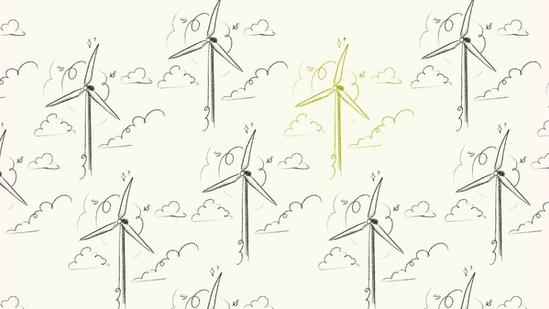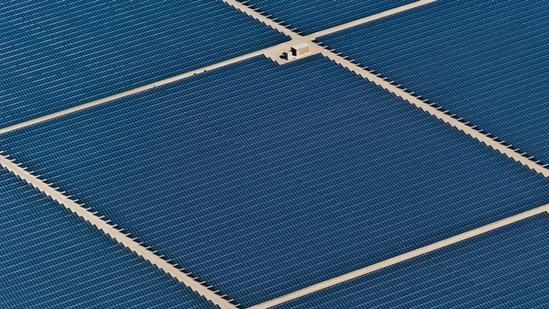Harnessing the Energy Transition for Value Creation


This is how the energy transition will affect long-term investing
- Shipping’s decarbonization is just one small part of an energy transition that’s shaping up to be one of the investment opportunities of the 21st century.
When EQT merged two ferry companies to form Nordic Ferry Infrastructure in 2022, it started making a low-carbon ferry operator for the future.
Transporting over 26 million passengers a year on 70 routes across Denmark and Norway, the region’s largest ferry operator has more than 100 vessels and aims to cut its CO2 emissions by almost half (40 percent) over the years to 2030.
But this is not just an exercise in cutting emissions. Replacing fossil-fuel propulsion with green energy and electricity should create value because the local population and economy are growing in a region that depends on maritime travel.
Shipping’s decarbonization is just one small part of an energy transition that’s shaping up to be the investment opportunity of the 21st century. According to the United Nations, upgrading to a world that depends on clean energy rather than burning fossil fuels will cost $275tn over the next 30 years. Without this, global temperatures are likely to rise above the 1.5°C increase targeted at the historic Paris Agreement in 2015.

Like any industrial revolution, the energy transition will favor those investors and companies with the vision and discipline to create change. “Successfully navigating major thematic shifts, such as the energy transition, demands rigorous discipline to ensure the changes work in our favor,” explains Francesco Starace, the EQT Infrastructure Partner who is also chair of the Science-Based Targets initiative. “It’s about more than adapting; it’s about leading and actively shaping change.”
The International Energy Agency envisions a huge shift by 2030, just six years from now. Imagine almost 10 times more electric cars gliding through the streets; solar photovoltaic (PV) panels yielding more electricity than the entire US power system does today; renewable energy generating almost half of all electricity; heat pumps and other electric heating systems outselling boilers; and investors putting three times more money into offshore wind farms than new coal- and gas-fired power plants.
Even so, some companies are struggling to turn a profit in industries that are already commoditized, showing the danger of following rather than leading. Notably, electric vehicle (EV) and solar photovoltaic (PV) panel manufacturers are battling massive overcapacity in China that’s pushing down prices. In a trade tussle with geopolitical overtones, the European Commission has accused China of unfairly subsidizing its EV industry with tax breaks and cheap loans, ahead of imposing tariffs of between 26 and 48 percent from July, fearing that cut-price imports will smother European car makers.
Turning to solar panels, there are similar disputes: a supply glut from China has left many manufacturers unprofitable. According to Bloomberg NEF, panel prices have plunged by more than 60 percent since July 2022.
Yet shaping change can result in strong opportunities. For instance, EQT Infrastructure acquired Statera, a leading UK battery storage and flexible generation developer in 2024, planning to provide the capital it needs to increase capacity. As the UK quickens the build out of wind and solar farms, while decommissioning thermal power stations, so batteries can smooth out the intermittent nature of renewable energy generation. Statera aims to help the UK reach its net zero carbon targets.
Turning to startups and scaleups, EQT Ventures is backing some of the young businesses that are seeking to build the world of the 2050s. These are applying technology to make the innovative zero emission businesses of the future.
Heart Aerospace, a Swedish aerospace company, plans to disrupt regional aviation through developing its ES-30 turboprop plane that can fly routes of up to 200km on electric power and up to 800km with hybrid propulsion. Introducing battery electric aircraft could reduce aviation emissions by more than a fifth (22 percent) by 2050, according to Heart’s analysis. What’s more, it would cut operating costs, making far more routes profitable.

Returning to the topic of ferries, Candela is a Swedish startup that uses hydrofoil technology – the same method that makes windsurfers skim above the water – to make faster and more efficient ships. The Candela P-12 is a 30-person passenger ferry that deploys this technology to use 80 percent less energy than traditional ships.
Francesco Starace believes that after a slow start the energy transition will become all-encompassing. He cites Ferrari, famed for the roar of its petrol engines, which has said that by 2026 some 60 percent of its vehicles will be fully electric or hybrid. “As a proud Italian, I can tell you the fact that the archetypal petrol heads are embracing this latest transition is the clearest sign of how pervasive it will become.”
It’s clear that the energy transition is accelerating fast. Whether in ferries, batteries, aircraft or cars, the architects of this upgrade to a world of less pollution and less noise have a once in a century opportunity to create significant value.
ThinQ is the must-bookmark publication for the thinking investor.



